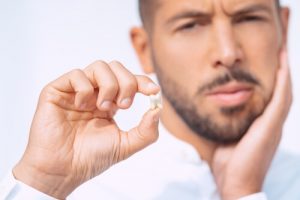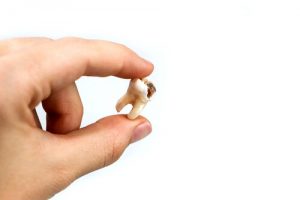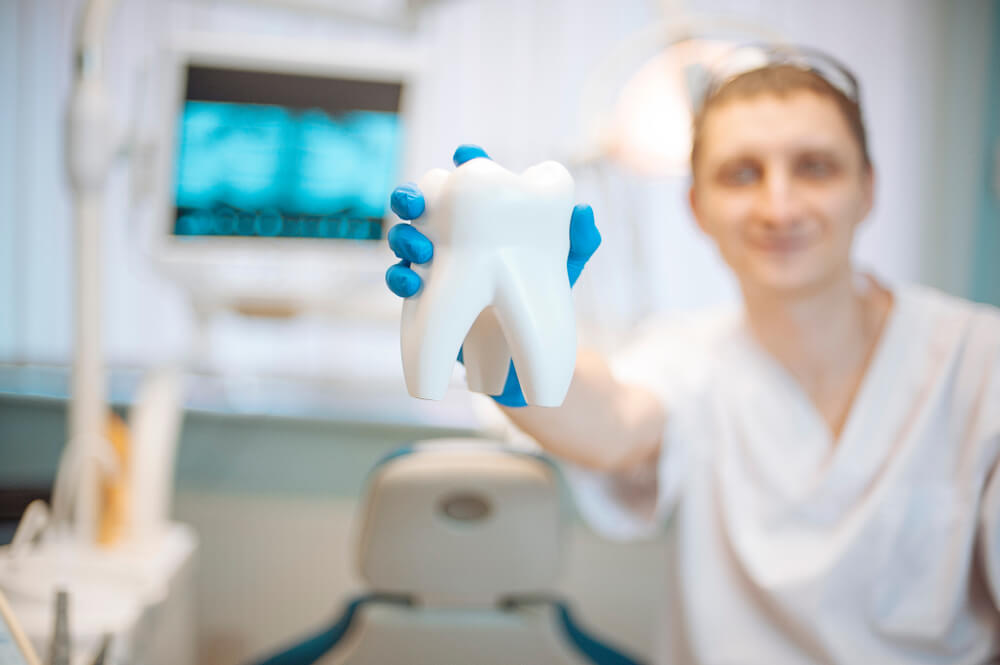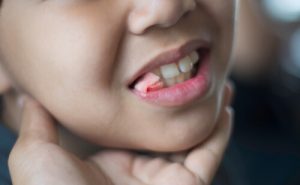Undergoing a tooth extraction can be a daunting experience, but the real challenge often lies in the aftercare. Proper post-procedure care is crucial for a smooth recovery and avoiding complications like infection or dry socket. Knowing how to look after the extraction site is essential whether you’ve had a wisdom tooth removed or a simple extraction. In this comprehensive guide, we’ll walk you through the essential steps of tooth extraction aftercare—from what to eat and drink to how to clean the area—so you can heal comfortably and confidently.
Reasons why a patient needs a tooth extraction
Tooth removal is often considered a last resort in dental care, but there are several situations where it becomes necessary. Here are some common reasons why a patient may need to have a tooth pulled out:
- Severe Tooth Decay: When tooth decay has reached the pulp or innermost part of the tooth, and the infection cannot be resolved with root canal therapy or antibiotics, extraction may be necessary to prevent the spread of infection.
- Advanced Periodontal Disease: Also known as gum disease, advanced periodontal disease can result in the loosening of teeth. Extraction may be recommended if the disease has compromised the structures supporting the tooth.
- Impacted Wisdom Teeth: Wisdom teeth that are impacted (trapped beneath the gum) can lead to severe pain, infection, and cyst formation. In these cases, removal is often suggested to alleviate symptoms and prevent further complications.
- Overcrowding: In some instances, particularly before orthodontic treatment, teeth may need to be removed to create space in the mouth for the remaining teeth to align properly.
- Fractured or Broken Teeth: Teeth that are severely fractured or broken, particularly in a way that cannot be repaired, may require extraction.
- Non-Functional or Poorly Positioned Teeth: Sometimes, teeth may need to be removed because they are poorly positioned and causing bite issues or because they have no opposing tooth to bite against and are thus considered non-functional.
- Pre-Prosthetic Requirements: For individuals getting dentures or certain dental implants, extractions may be needed to prepare the mouth for the prosthetic. Get more information.
- Cosmetic Reasons: In some cases, teeth may be removed for aesthetic reasons, often as part of a broader cosmetic dental plan.
- Medical Treatments: Patients undergoing chemotherapy, organ transplantation, or other medical procedures that compromise the immune system may require extractions to eliminate infection risks.
Immediate Aftercare: The First 24 Hours
The first 24 hours following tooth extraction are critical for ensuring a smooth recovery and minimizing the risk of complications. During this period, most people experience some degree of discomfort, bleeding, and swelling. However, proper aftercare can mitigate these issues and set the stage for optimal healing. Here’s what you need to know about immediate aftercare during the first day after your extraction:
Managing Bleeding
- Place a sterile gauze pad over the extraction site and bite down gently to apply pressure.
- Replace the gauze as needed, especially if it becomes soaked with blood.
- If bleeding continues for several hours, contact your dentist.
Controlling Swelling and Pain
- Apply an ice pack or a bag of frozen vegetables wrapped in a cloth to the affected area for 15-20 minute intervals.
- Over-the-counter pain relievers like ibuprofen can help manage discomfort, but consult your dentist for dosage and any possible drug interactions.
Nutrition and Hydration
- Stick to soft foods like yogurt, pudding, and mashed potatoes.
- Avoid hot, spicy, and acidic foods and beverages like coffee, tea, and alcohol that can irritate the wound.
- Stay hydrated, but don’t use a straw, as the sucking motion can dislodge the blood clot that aids in healing.
Oral Hygiene
- Do not rinse your mouth or brush your teeth for the first 24 hours to allow the formation of a protective blood clot.
- After 24 hours, you may gently rinse with warm salt water (1/2 teaspoon of salt in a cup of warm water) several times a day to reduce inflammation and cleanse the area.
Physical Activity
- Limit physical exertion for the first 24 hours, as increased blood flow can lead to additional bleeding and slow down the healing process.
Medications and Antibiotics
- If your dentist has prescribed antibiotics or other medications, take them as directed to prevent infection.
Nutrition and Hydration: What to Eat and Drink
Proper nutrition and hydration are crucial to your recovery after a tooth extraction. Your food and drink choices can influence your comfort levels and the speed of your healing process. Below are some tips on what to eat and drink and what to avoid during the recovery period.
Foods to Eat
- Soft Foods: Opt for foods that require minimal chewing and are easy on your mouth. Mashed potatoes, yogurt, smoothies, and oatmeal are good options.
- Protein-Rich Foods: Soft protein foods like scrambled eggs, tofu, and cottage cheese can help with tissue repair.
- Fruits and Veggies: Pureed fruits like applesauce or soft fruits like bananas can provide essential nutrients without irritating the extraction site. Soft-cooked vegetables like carrots or spinach are also good choices.
- Soups and Broths: Warm (not hot) soups and broths are easy to consume and soothing. Just be sure they are not too hot, as this can disrupt the healing process.
Drinks to Consume
- Water: Staying hydrated is essential for healing. Aim to drink plenty of water throughout the day.
- Herbal Teas: Non-caffeinated herbal teas like chamomile can be soothing, but ensure they are not too hot.
- Coconut Water: This can be a good source of hydration and essential nutrients, but choose varieties without added sugar or acid.
Foods and Drinks to Avoid
- Hot Foods and Drinks: Anything too hot can disrupt the blood clot at the extraction site, essential for healing.
- Spicy and Acidic Foods: Spicy foods can irritate the wound, and acidic foods like citrus fruits can interfere with healing.
- Hard, Crunchy Foods: Foods like chips, nuts, and hard vegetables can disrupt the healing process and even cause harm to the extraction site.
- Sugary and Sticky Foods: These can increase the bacterial infection risk.
- Alcoholic Beverages: Alcohol can slow down the healing process and interact with prescribed medications.
- Using a Straw: The straw suction can dislodge the blood clot at the extraction site, leading to a painful condition known as a dry socket.
Your food and drink choices in the days following your extraction can significantly impact your comfort and healing. Always consult your dentist for personalized advice tailored to your specific needs and condition.
 Cleaning and Oral Hygiene
Cleaning and Oral Hygiene
Maintaining a clean oral environment is crucial for promoting healing and reducing the risk of complications after a tooth extraction. However, the regular oral hygiene routine you’re accustomed to might need some modifications to accommodate your healing process after your dental procedure. Here’s a guide to help you navigate cleaning and oral hygiene post-extraction:
First 24 Hours: Be Gentle
- Do Not Rinse or Spit: Avoid rinsing, spitting, or using a straw during the first 24 hours to allow a stable blood clot to form at the extraction site.
- No Brushing: It’s best to avoid brushing teeth immediately adjacent to the extraction site for the first day to prevent dislodging the blood clot.
- Quit smoking: After tooth extraction, it’s best to avoid smoking as this could stop blood clotting around the extraction site.
After 24 Hours: Gradual Cleaning
- Saltwater Rinses: After the first day, gently rinse your mouth with warm salt water (1/2 teaspoon of salt in a cup of warm water) several times a day. This can help to cleanse the area and reduce inflammation.
- Soft-Bristled Toothbrush: Use a soft-bristled toothbrush and gently brush the rest of your teeth, avoiding the extraction site for a few more days.
Toothpaste and Mouthwash
- Fluoride Toothpaste: Continue using fluoride for the rest of your teeth to maintain overall oral health.
- Non-Alcoholic Mouthwash: If your dentist recommends a mouthwash, opt for non-alcoholic versions, as alcohol can slow healing.
Flossing
You can resume flossing in other areas of your mouth, but be cautious when flossing near the extraction site. Always follow your dentist’s advice on when to start flossing in that area again.
Special Cleaning Aids
Oral Syringe or Water Flosser: For some types of extraction or oral surgery, your dentist might provide you with a special syringe to irrigate the wound gently.
When to Resume Regular Oral Hygiene
Generally, you should be able to resume your regular oral hygiene routine within a week or so, but this may vary depending on the complexity of your extraction and your healing process.
Signs of Complications
While maintaining oral hygiene, pay attention to symptoms like persistent bad odour, unusual discharge, or increasing pain, as these might indicate an infection.
Remember, proper oral hygiene is just one component of successful recovery after a tooth removal. Always consult your dentist or oral surgeon for personalized instructions tailored to your situation.
Warning Signs: When to Contact Your Dentist
While most tooth extractions go smoothly with proper aftercare, it’s crucial to know the warning signs that indicate a potential problem requiring immediate medical attention. Identifying and addressing complications early can prevent more serious issues from arising. Here are some symptoms and conditions for which you should contact your dentist immediately:
 Persistent or Severe Bleeding
Persistent or Severe Bleeding- Intense Pain
- Swelling That Doesn’t Subside
- Fever and Chills
- Bad Taste or Foul Smell
- Numbness
- Signs of Dry Socket
- Difficulty Opening Your Mouth
- Unusual Discharge or Pus
If you experience any of these symptoms, contact your dentist immediately for advice on next steps. You may require additional treatment, such as antibiotics or other interventions, to address the issue and ensure a smooth recovery.
References:
https://my.clevelandclinic.org/health/treatments/22120-tooth-extraction
https://www.healthline.com/health/tooth-extraction-aftercare
https://www.webmd.com/oral-health/pulling-a-tooth-tooth-extraction
https://www.dentalhealth.org/what-to-do-following-an-extraction
https://www.medicalnewstoday.com/articles/326147
https://www.dentalhealth.org/what-to-do-following-an-extraction



viagra alternatives otc Patch tests have had inconsistent and conflicting results in the diagnosis of non immediate reactions to quinolones 125